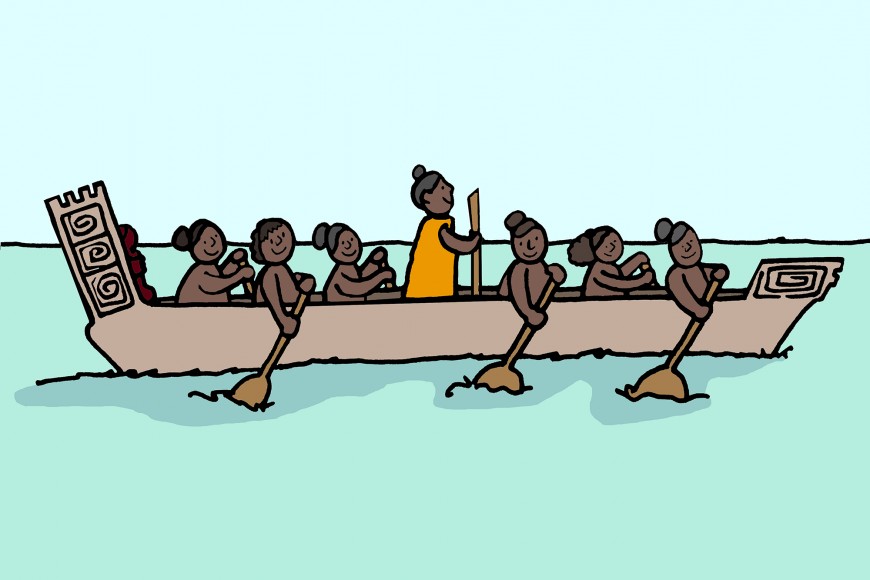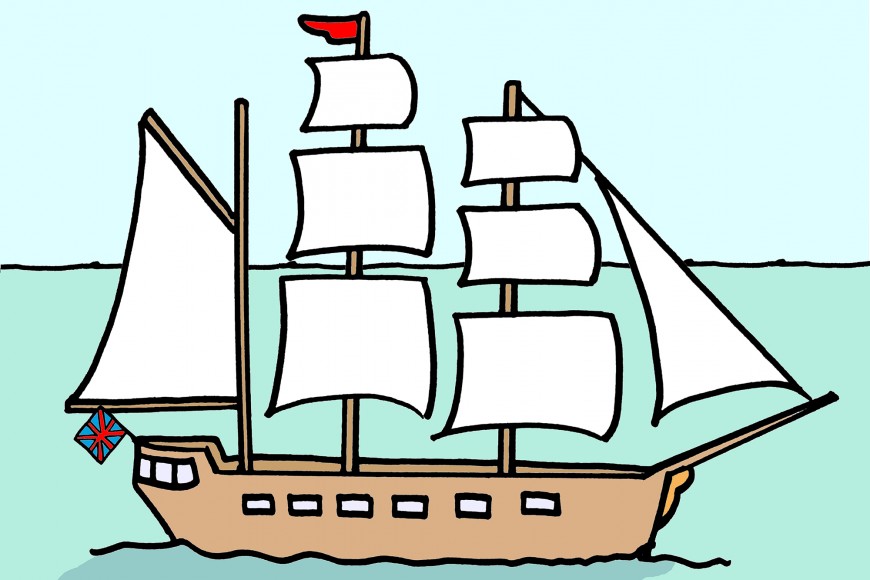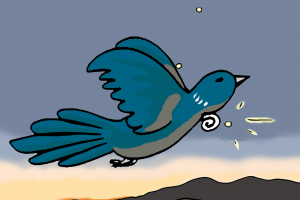The Story of Tūī | Ngā Kōrero O Te Tūī
In this section
-
Teaching resources
- All about insects
- Ngā pepeke: he pārongo
- The arthropods on the pare
- BioBlitz
- Poster: He aha tēnei hekaheka? What is this fungus?
- Poster: He aha tēnei pepeke? What is this bug?
- Poster: Ole a le bug? What is this bug?
- Poster: Sea te manu foliki tenei? What is this bug?
- Poster: He aha tēnei manu? What is this bird?
- Poster: Who is in the wetland? Ko wai kei te repo?
- Poster: Ko wai kei te repo? Who is in the wetland?
- Pollination & pollinators
- The Great Weeds Hunt Aotearoa
- The Story of Tūī | Ngā Kōrero O Te Tūī
- Well-being in a pā harakeke | Hauora i roto i te pā harakeke
Kōkō – a gift to Tāne
The kōkō is also associated with the star Rehua (Antares). In a story retold here by Rangi Matamua (Tūhoe), Tāne ascended to the heavens to seek knowledge.
Before Tāne returned to Papatūānuku, the supernatural being Rehua gifted him kōkō and other creatures to populate Papatūānuku, the earth. The kōkō, the tātarakihi (cicada), the kēkerewai (mānuka chafer beetle), the hākūwai, and the pihareinga (black field cricket) were collectively referred to as Ngā manu a Rehua (the ‘birds’, or flighted creatures of Rehua). Other creatures, including the korokoro (lamprey), the moki, the kohikohi (trumpeter fish), the kaiherehere (a type of eel), the maomao and the inanga were referred to collectively as Ngā pōtiki a Rehua (Rehua’s infants).
Ngā manu a Rehua and Ngā pōtiki a Rehua are a group of stars near Rehua and below the constellation of Te waka o Mairerangi (the body of Scorpio).
Rehua adorned the kōkō with a whetū (star) on its neck to bring a voice and to remind everyone of its origin.
Kōkō – he takoha ki ā Tāne
He tūhonotanga anō tō te kōkō ki ā Rehua. I te kōrero ā Rangi Matamua (Tūhoe), i piki atu a Tāne ki ngā rangi ki te kimi i te mātauranga.
I mua o te hokinga mai ō Tāne ki ā Papatūānuku ka takohahia atu e te tipua rā e Rehua he kōkō māna, me ētahi atu hei noho i runga i ā Papatūānuku. Ko te kōkō, te tātarakihi, te kēkerewai, te hakuwai me te pihareinga ngā kohinga e mōhiotia ana ko ‘Ngā Manu ā Rehua’. Ko te kohinga ika, te korokoro, te moki, te kohikohi, te kaiherehere, te maomao me te inanga i kīa ko ‘Ngā Pōtiki ā Rehua’.
He kāhui whetū ‘Ngā Manu ā Rehua’ me ‘Ngā Potiki ā Rehua’ pātata ki ā Rehua, ā, kei raro iho i te tātai whetū o ‘Te Waka ō Mairerangi’.
I rākaitia e Rehua ā kōkō ki te whetū i runga i tōna kakī hei tuku reo, ā, kia maumaharatia tonutia ai tōna ōrokohanga mai.
Kōkō (or tūī) - a bird with many names
As the tūī (or Prosthemadera novaeseelandiae in Latin) is such a lively and beautiful bird, it is not surprising it has many different Māori and English names. Although most of the tūī’s names reflect its behaviour and appearance, Māori names for tūī also vary depending on the time of year, the bird’s location and sex. Here we illustrate with a few examples how the tūī’s name has changed over time.
Kōkō (tūī rānei) – he manu maha ōna ingoa
Nā te mea he manu tītakataka, ātaahua hoki te tūī (Prosthemadera novaeseelandiae i roto i te reo Ratina) nā wai anō i maha ai ōna ingoa Māori, ingoa Pākehā. Ahakoa te nuinga o ngā ingoa o te tūī e whakaāta ana i ōna whanonga i tōna āhua, ko ōna ingoa Māori ka rerekē, e ai ki te wāhanga o te tau, te wāhi e kitea ana, ā, mēnā hoki he tāne he uwha rānei. Anei e whai ake nei ētahi tauira o ngā whakarerekētanga o te ingoa o tūī i ngā huringa o te wā.
Key contact




